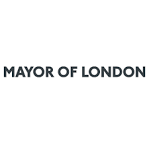Mayor’s latest review of Met’s Gang Violence Matrix
- Number of people on Gang Violence Matrix down to lowest total ever
- Matrix database now more transparent than ever before
- Majority of individuals assessed as low risk now being removed from database as Mayor and Commissioner take decisive action to tackle disproportionality affecting Black Londoners
The Mayor of London, Sadiq Khan, has today announced that the number of young Londoners on the Met’s Gang Violence Matrix has been halved to its lowest ever level since the database was set up a decade ago.
Following the latest annual review of the matrix by the Mayor’s Office for Policing and Crime (MOPAC), the Met has taken the decision for all those deemed to be low risk – more than 1,200 people – to be removed from the Matrix database, which was created in the aftermath of the 2011 riots and is used by the Met to identify those at risk of committing, or being a victim of, gang-related violence in London.
New figures reveal that there are now 1,933 individuals on the Matrix – the lowest number since the database was set up in 2012. This represents a decrease of 49 per cent from August 2017, when the number of individuals on the Matrix peaked at 3,881.
Met Commissioner Sir Mark Rowley has committed to a complete redesign of the Matrix, in consultation with MOPAC, academics and communities as part of his action to rebuild public confidence and trust in the Met.
The Mayor ordered a wide-ranging review of the database in 2017 following concerns in the Lammy review* around how many young Black men were on the Matrix compared with their likelihood of offending or their chances of being a victim.
Communities also had deep reservations about how the Matrix operates, including concerns that young Londoners listed could face sanctions relating to housing and other public services, and inconsistencies in how data on the gangs list was being used and shared.
The scrutiny of the Matrix fulfils a Mayoral commitment to carry out the largest and most comprehensive review of the database and swiftly implement nine recommendations to ensure it is as effective and efficient as possible. Following the 2017/2018 review, a Disproportionality Board was established by the Mayor as part of his Action Plan launched in November 2020 to look at a wide-range of policing issues, including the Matrix and ongoing work to improve trust and confidence in the Met. This has resulted in clearer processes and better oversight of how the Matrix is being used, increasing transparency and ensuring a robust case is made before individuals are added to the database and that they are removed when there is sufficient evidence they have exited a gang lifestyle.
There has been a sustained reduction in those individuals on the Matrix who had previously been assessed at low risk of causing gang-related violence but were registered on the database due to a previous link with a gang. The Met has now committed to removing this category – known as being in the ‘green banding’ – from the Matrix, so that it can focus resources on those most at risk of being impacted by gang-related crime.
But the Mayor is clear that more must be done to tackle disproportionality and he is committed to working closely with the Met Commissioner to make sure the Gang Violence Matrix is used fairly and effectively.
The Mayor of London, Sadiq Khan, said: “The fact Black Londoners have less trust in the Met should concern us all. That is why the comprehensive overhaul of the Gang Violence Matrix is so important – increased scrutiny and transparency will help increase the degree of confidence all of London’s diverse communities can have in the Met.
“As a direct result of the police acting on the recommendations, the Matrix database is now more effective and more evidence-based than ever before.
“We know that gang-related violence still accounts for a significant proportion of the most serious crime in London and the Matrix is a necessary enforcement tool as well as a means to support and intervention, but it’s vitally important that the police continue to evaluate how it is used. It’s something the new Met Commissioner and I have committed to improving together in order to build a fairer and safer London for everyone.”
Commissioner, Sir Mark Rowley, said: “The Met does need to use intelligence and data-led tools in order to help protect the public from perpetrators of violence. The Gangs Violence Matrix was set up in 2012 with the intention of reducing gang-related violence, safeguarding those exploited by gangs and preventing young lives from being lost. We recognise that to prevent crimes and protect the public, the police have extraordinary powers. It is our duty to use these responsibly and right that our methods are scrutinised. We acknowledge that the Gangs Violence Matrix does need to be redesigned, taking into account improvements in statistical methods and technologies.
“We know that young men; and in particular young black men, continue to be over represented on the Matrix. Sadly, there is a reality that levels of violent crime do disproportionally affect young Black men – both in terms of victimisation and offending and our tactics do need to be targeted so we can protect those most at risk. However, it is not appropriate that the Matrix further amplifies this disproportionality. As an immediate response, we are removing all the lowest risk individuals. This represents 65 per cent, or more than 1,100 people.
“We have worked closely with MOPAC over the last few years to strengthen how we use the Matrix and have almost halved the number of people on it, from a peak of more than 3,800 in 2017 to under 2,000 now. We are committed to the complete redesign of the Gangs Violence Matrix, informed by further academic research, and will be engaging closely with community groups and partners on this in the next few months.”
